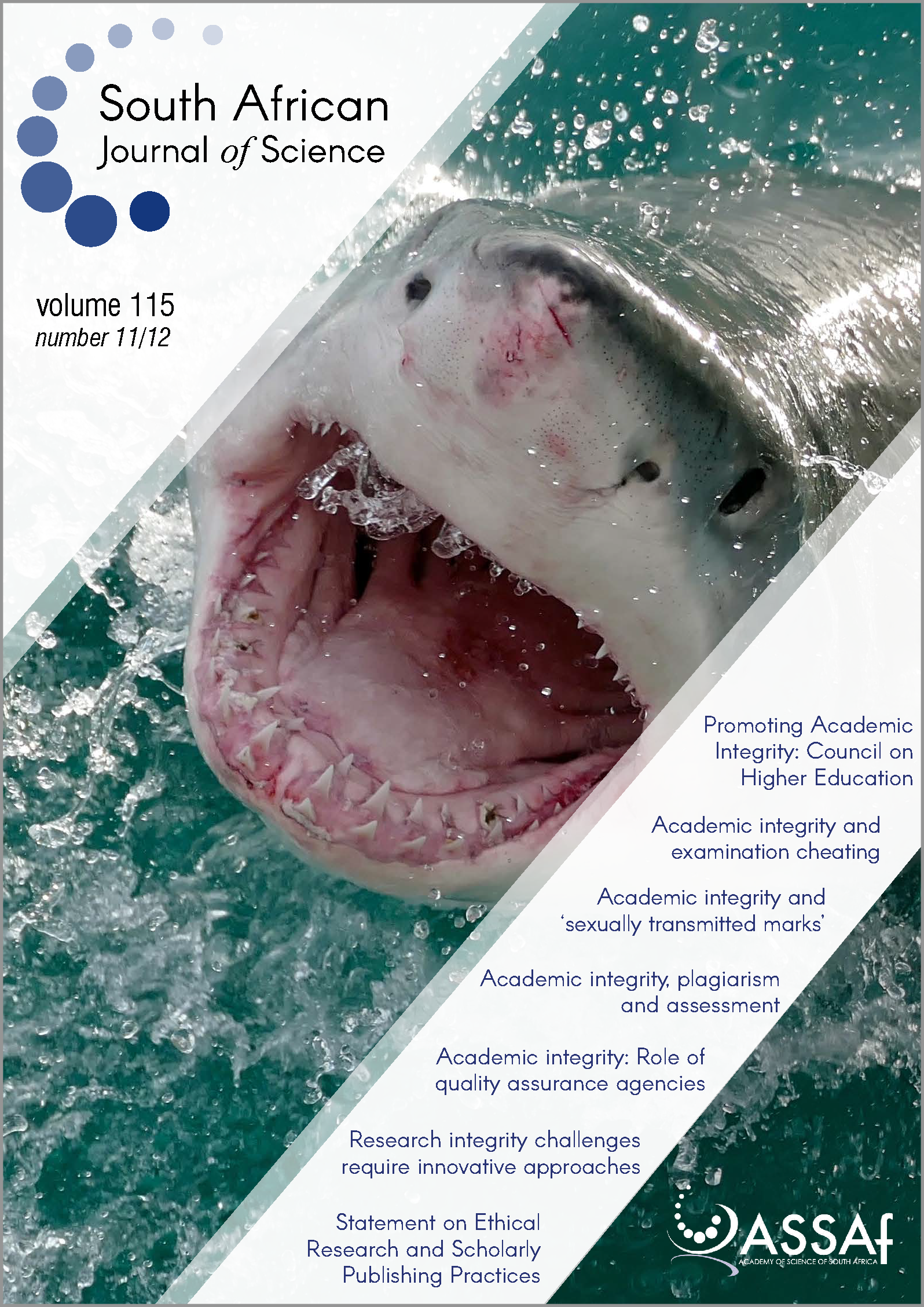First report of the isolation of entomopathogenic nematode Steinernema australe (Rhabditida: Steinernematidae) from South Africa
DOI:
https://doi.org/10.17159/sajs.2019/6008Keywords:
strain, morphological variations, survey, biocontrol agentAbstract
A survey was conducted in Walkerville, south of Johannesburg (Gauteng, South Africa) between 2012 and 2016 to ascertain the diversity of entomopathogenic nematodes in the area. Entomopathogenic nematodes are soil-dwelling microscopic worms with the ability to infect and kill insects, and thus serve as eco-friendly control agents for problem insects in agriculture. Steinernematids were recovered in 1 out of 80 soil samples from uncultivated grassland; soil was characterised as loamy. The entomopathogenic nematodes were identified using molecular and morphological techniques. The isolate was identified as Steinernema australe. This report is the first of Steinernema australe in South Africa. S. australe was first isolated worldwide from a soil sample obtained from the beach on Isla Magdalena – an island in the Pacific Ocean, 2 km from mainland Chile.
Significance:
- Entomopathogenic nematodes are only parasitic to insects and are therefore important in agriculture as they can serve as eco-friendly biopesticides to control problem insects without effects on the environment, humans and other animals, unlike chemical pesticides.
Open data set:
Published
Issue
Section
License

All articles are published under a Creative Commons Attribution 4.0 International Licence
Copyright is retained by the authors. Readers are welcome to reproduce, share and adapt the content without permission provided the source is attributed.
Disclaimer: The publisher and editors accept no responsibility for statements made by the authors
How to Cite
- Abstract 1463
- PDF 657
- EPUB 167
- XML 379












.png)